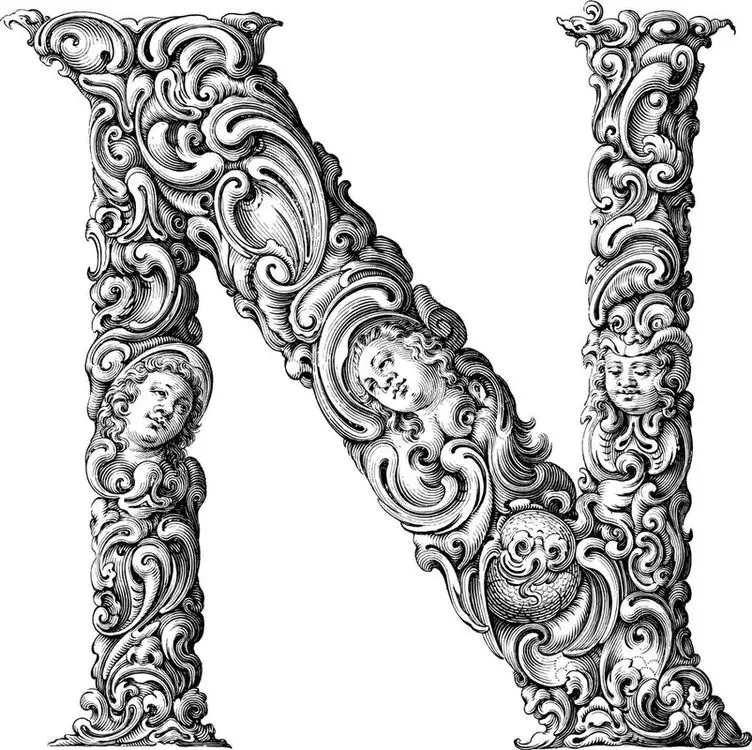As one of the 26 letters in the English alphabet, the letter N holds a unique position in language and communication. It is a consonant sound that can be combined with various vowels to form a wide range of words, from “note” to “noble” and beyond. However, the letter N is more than just a building block of vocabulary. In this article, we will explore the many dimensions of the letter N, from its symbolism and cultural significance to its practical applications in various fields.
The Symbolism of the Letter N

The symbolism of the letter N has evolved over time, and in different cultures, it has taken on various meanings. In some traditions, the letter N is associated with the number 14, as it is the fourteenth letter of the alphabet. This connection has led to various interpretations and correspondences in numerology, astrology, and other systems of divination. In tarot, for example, the fourteenth card is often associated with balance, justice, and self-control, which may reflect the letter N’s role as a stabilizing force in language and communication.
Beyond its numerical associations, the letter N has also been interpreted in various cultural and religious contexts. In some cultures, the letter N is associated with the concept of infinity or eternity, as its shape resembles a never-ending loop. This symbolism can be found in ancient Egyptian and Mesopotamian art, where the letter N was often used as a hieroglyph for the word “eternal” or “perpetual”. In other traditions, the letter N is associated with spiritual or mystical concepts, such as the Hindu concept of “nirvana” or the Sufi concept of “nafs” (the ego or self).
The Practical Applications of the Letter N

The practical applications of the letter N have made it an integral part of language and communication. From writing and reading to speaking and listening, the letter N plays a crucial role in conveying meaning and expressing ideas.
One of the most basic applications of the letter N is in spelling and pronunciation. As a consonant sound, the letter N is pronounced by closing the mouth and vibrating the vocal cords, which creates a nasal sound. This sound can be combined with various vowels to form words that convey a wide range of meanings and concepts. The letter N also has a unique position in the English language as it is often used to denote negation, as in the words “no” and “not”.
In addition to its role in spelling and pronunciation, the letter N is also used in various other systems of communication, such as sign language, Braille, and Morse code. In American Sign Language, for example, the letter N is formed by holding up the index and middle fingers and tucking in the ring finger and pinky. In Braille, the letter N is represented by a series of raised dots in a specific pattern.
In the field of mathematics, the letter N is often used to represent numbers and variables. For example, in algebra, the letter N may be used to represent the number of objects in a set, while in geometry, the letter N may be used to represent the number of sides in a polygon. In addition to its use as a variable, the letter N is also used in various mathematical functions and equations, such as the natural logarithm (ln), which uses the letter N to represent the base of the logarithm.
In the fields of science and technology, the letter N has a wide range of applications and uses. In chemistry, for example, the letter N is used to represent the element nitrogen, which is a crucial component of many organic and inorganic compounds. Nitrogen is essential for life on Earth and is used in various industries, such as agriculture and manufacturing. The letter N is also used in physics, where it represents the force of normal reaction, which is the force that acts perpendicular to a surface when an object is in contact with it. In computer science and programming, the letter N is often used to represent the size of a dataset or the number of iterations in a loop.
The Cultural Significance of the Letter N

The cultural significance of the letter N can be found in various art forms, literature, and traditions. In literature, the letter N has been used in various ways to convey different meanings and emotions. For example, the letter N is used in the title of Nathaniel Hawthorne’s famous novel “The Scarlet Letter,” which explores themes of sin, guilt, and redemption. The letter N is also a central symbol in J.D. Salinger’s novel “The Catcher in the Rye,” where the protagonist, Holden Caulfield, wears a red hunting cap with the letter N on it as a symbol of his alienation from society.
In visual art, the letter N has been used in various ways to create patterns, designs, and motifs. In Islamic art, the letter N is often used as a decorative element, where it is repeated in intricate geometric patterns to create beautiful and complex designs. In graffiti and street art, the letter N is often used as a tag or signature, where it represents the artist’s identity and style.
In music, the letter N has been used in various ways to create rhythm, melody, and lyrics. In classical music, the letter N is often used as a musical symbol to denote a note or rest that is neither sharp nor flat. In pop and rock music, the letter N has been used in various song titles and lyrics, such as “No Woman, No Cry” by Bob Marley and “Nothing Compares 2 U” by Sinead O’Connor.
The letter N also has cultural significance in various traditions and customs around the world. In Chinese culture, the letter N is associated with the element water, which is seen as a symbol of wisdom, flexibility, and adaptability. In Japanese culture, the letter N is associated with the concept of “ninja,” which refers to a skilled and stealthy warrior. In Hinduism, the letter N is associated with the concept of “namaste,” which is a greeting that expresses respect and humility.
The Letter N in Biology: Nitrogen Fixation and Nucleotides

In biology, the letter N plays a crucial role in two key areas: nitrogen fixation and nucleotides. Nitrogen fixation is the process by which atmospheric nitrogen is converted into a form that can be used by plants and animals. This process is essential for maintaining the balance of nutrients in ecosystems and supporting the growth of crops and other plant-based industries.
One of the key players in nitrogen fixation is the nitrogenase enzyme, which contains iron and molybdenum as cofactors. These cofactors enable the enzyme to convert atmospheric nitrogen into ammonia, which can then be used by plants as a source of nitrogen for growth and development. The letter N is used to denote the importance of this process in biology and agriculture, and to highlight the role that nitrogen plays in maintaining the health of our planet.
In addition to nitrogen fixation, the letter N is also important in the context of nucleotides. Nucleotides are the building blocks of DNA and RNA, which are the molecules that carry genetic information in all living organisms. The four nucleotides that make up DNA are adenine (A), cytosine (C), guanine (G), and thymine (T). In RNA, thymine is replaced by uracil (U).
Each nucleotide consists of a sugar molecule, a phosphate group, and a nitrogenous base. The nitrogenous base can be one of four types: A, C, G, or T/U. The letter N is used to denote a nucleotide that can be any of the four types of nitrogenous bases. This allows for flexibility in genetic coding and allows organisms to adapt to different environmental conditions.
The Letter N in Linguistics: Phonetics and Phonology

In linguistics, the letter N plays an important role in the study of phonetics and phonology. Phonetics is the study of the physical properties of speech sounds, while phonology is the study of the abstract patterns and rules that govern the sound system of a language.
The letter N is used to represent a specific speech sound in many languages, including English. The sound represented by the letter N is a voiced alveolar nasal consonant, which is produced by lowering the velum and allowing air to pass through the nasal cavity while blocking the oral cavity with the tongue.
The letter N is also used in phonology to represent a specific phoneme, which is a unit of sound that can distinguish meaning between words. For example, the words “pan” and “ban” are distinguished by the presence or absence of the phoneme represented by the letter N. In some languages, such as Hindi and Punjabi, the letter N is also used as a separate letter to represent a different sound, such as the retroflex nasal consonant.
Overall, the letter N plays a crucial role in linguistics, biology, mathematics, physics, computer science, and culture. Its versatility and significance make it a fascinating subject of study and a fundamental part of our communication and expression. By understanding the many meanings and uses of the letter N, we can deepen our understanding of language, science, and culture, and expand our horizons of knowledge and creativity.
Conclusion
In conclusion, the letter N is a versatile and multifaceted symbol that has significance in various fields of knowledge and culture. From its numerical and spiritual associations to its practical applications in language, communication, mathematics, and science, the letter N has a wide range of meanings and uses. Whether we are spelling words, solving equations, creating art, or expressing our emotions, the letter N is a fundamental building block of our communication and expression. By understanding the significance of the letter N, we can deepen our appreciation for language and culture, and expand our horizons of knowledge and creativity.




